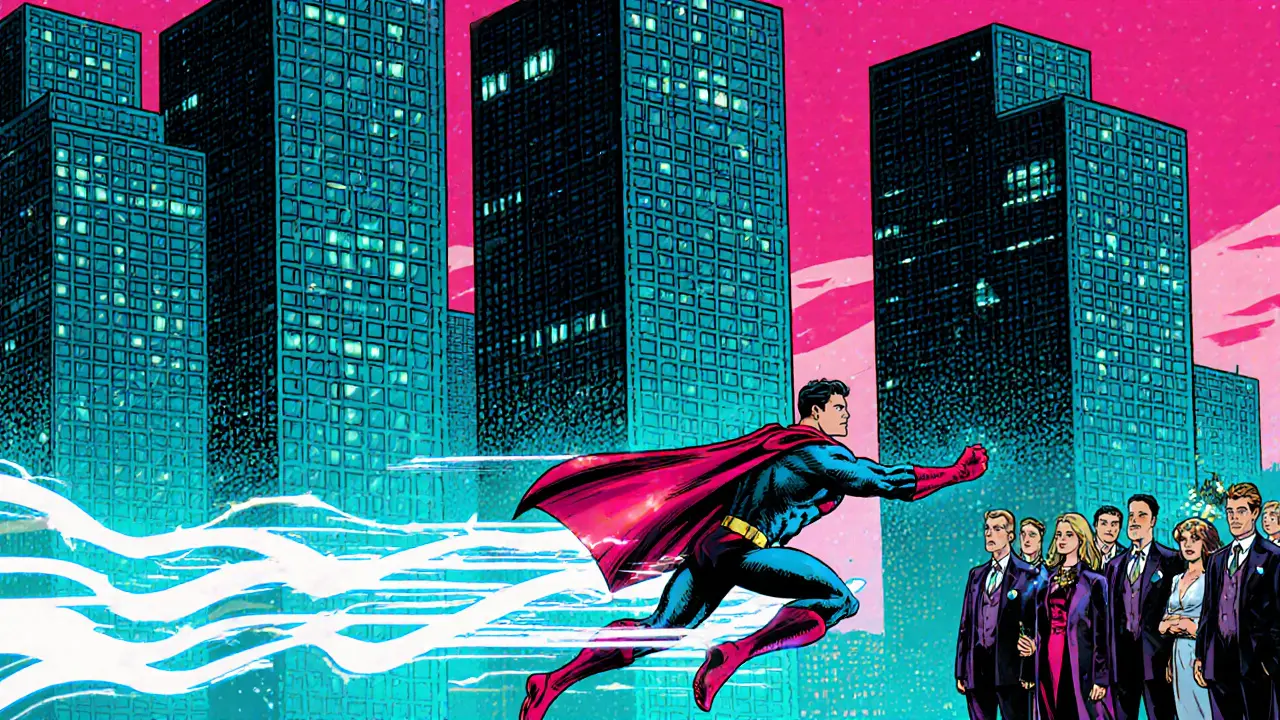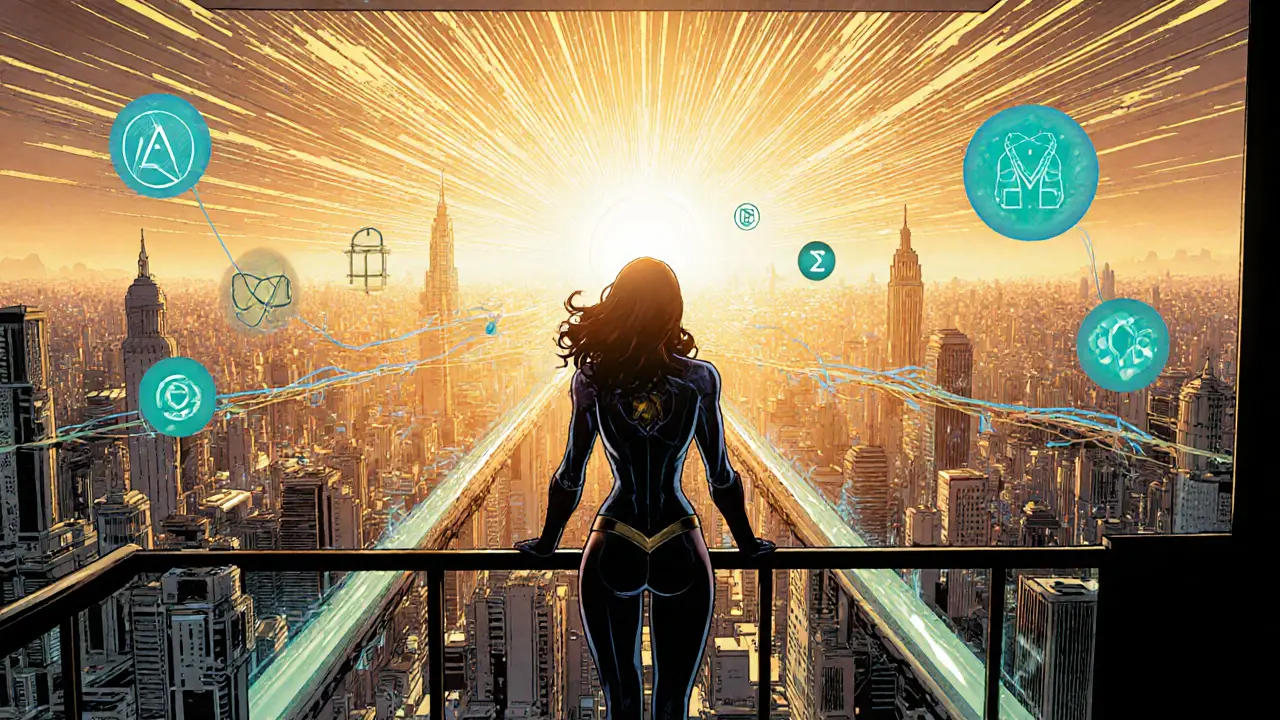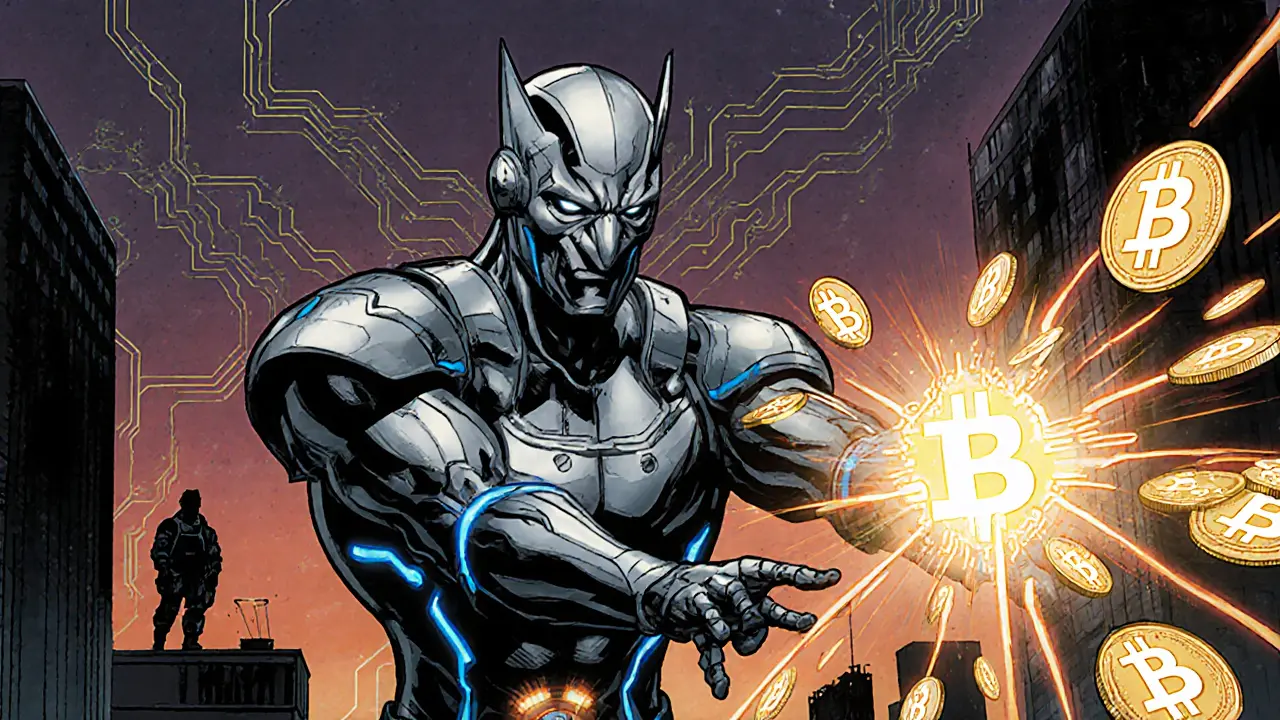Zero-Fee Crypto Comparison Tool
Nano (XNO)
Transaction Fee: 0 USD
Consensus Model: DPoS (Block-Lattice)
Avg Confirmation Time: ~30 seconds
Typical Use Case: Micropayments, Remittances
Adoption Level: Moderate
Nano's block-lattice architecture allows instant transactions with zero fees. Validators are elected through delegated proof-of-stake, ensuring security without transaction costs.
Key Features
- Instant Settlement ✓
- No Transaction Fees ✓
- Energy Efficient ✓
- Scalable Design ✓
Comparison Matrix
| Network | Fee | Consensus | Use Case | Confirmation Time | Adoption |
|---|---|---|---|---|---|
| Nano | 0 USD | DPoS (Block-Lattice) | Micropayments | ~30 sec | Moderate |
| IOTA | 0 USD | Tangle (DAG) | IoT Payments | ~5 sec | Low |
| Tron | ≈$0.001 | DPoS | Gaming, dApps | ~3 sec | High |
| Stellar | 0.00001 XLM (~$0.000004) | SCP (Quorum-based) | Cross-border | 2-5 sec | High |
When you hear zero-fee cryptocurrency transaction means sending digital money without paying any network fee, you might wonder how a system can stay secure without the usual miner rewards. The answer lies in fresh consensus designs, lightweight data structures, and community‑driven validation. Below you’ll discover the tech behind fee‑free payments, the projects that have nailed it, and the real‑world pros and cons you should weigh before hopping on board.
Quick Summary
- Zero‑fee models replace mining rewards with alternative incentives like delegated staking or user‑validated DAGs.
- Leading projects - Nano, IOTA, Tron, Stellar - each use a unique architecture to keep costs at $0.
- Instant or near‑instant confirmations make these networks perfect for micro‑payments and IoT.
- Adoption is growing but still limited compared to Bitcoin or Ethereum.
- Future success hinges on sustainable funding, security, and broader merchant acceptance.
Why Traditional Crypto Fees Exist
Classic blockchains such as Bitcoin rely on a Proof‑of‑Work (PoW) system where miners spend electricity and hardware to secure the ledger. Fees act as a financial carrot, prioritising transactions when the network gets busy. Ethereum adds another layer: gas fees reflect not just network load but also the computational work required to run smart contracts. As congestion spikes, users can face fees that dwarf the value of the transfer, especially for tiny payments.
How Zero‑Fee Networks Eliminate Costs
Zero‑fee platforms discard the need for miners and replace it with mechanisms that don’t require a direct payment per transaction. The most common approaches are:
- Delegated Proof‑of‑Stake (DPoS): Token holders vote for a handful of representatives who validate blocks. Since validators earn rewards from block inflation or network fees that are set to negligible levels, end‑users pay nothing.
- Directed Acyclic Graph (DAG) structures: Every new transaction must confirm previous ones, turning users into mini‑miners. No separate mining pool means no fees.
- Block‑Lattice architecture: Each account runs its own chain, and the network only needs to verify balance updates, not a full global block.
These designs shift the incentive from transaction fees to network‑wide rewards, protocol‑level token inflation, or voluntary community funding.
Project Spotlights
Nano uses a block‑lattice DAG that gives every account its own chain, removing miners entirely
Nano’s block‑lattice lets users send and receive instantly. Validation is handled by a small set of elected representatives (DPoS) who lock up XNO as collateral. Because there’s no mining competition, the network can process a transaction for zero‑fee cryptocurrency users in under a second. The main drawback is modest adoption - many exchanges list XNO, but merchant integrations are still scarce.
IOTA operates on the Tangle, a DAG where each new transaction validates two previous ones
IOTA’s fee‑free model shines in the Internet of Things (IoT). Devices embed a tiny amount of IOTA each time they send data, effectively paying with work rather than money. The Tangle scales linearly, so high‑frequency machine‑to‑machine payments stay free. However, developers must grapple with Coordicide - the ongoing effort to remove the central coordinator that currently helps secure the network.
Tron employs a Delegated Proof‑of‑Stake system with abundant block producers, keeping fees near zero
Tron processes thousands of transactions per second, mainly supporting decentralized apps (dApps) and gaming. Most TRX transfers cost less than $0.01, and many token moves are truly fee‑free thanks to internal resource allocation (bandwidth and energy). The trade‑off is a higher concentration of voting power among a limited set of super‑representatives, which raises centralisation concerns.
Stellar uses the Stellar Consensus Protocol (SCP) and charges a minuscule fee of 0.00001 XLM
Stellar isn’t completely fee‑free, but its cost is effectively zero for most users (about $0.000004 in August2025). SCP elects a quorum of trusted nodes to reach agreement quickly, enabling cross‑border payments that settle in 2‑5 seconds. The platform balances ultra‑low fees with strong compliance tools, making it a favorite for fintech firms.

Side‑by‑Side Comparison
| Project | Transaction Fee | Consensus Model | Typical Use Cases | Avg Confirmation | Adoption Level |
|---|---|---|---|---|---|
| Nano | 0USD | DPoS (block‑lattice) | Micropayments, remittances | <1s | Medium - listed on >30 exchanges |
| IOTA | 0USD | Tangle (DAG) | IoT device payments, data integrity | ~5s | Low - niche developer community |
| Tron | ≈$0.001 | DPoS | Gaming, DeFi, dApps | ~3s | High - strong dApp ecosystem |
| Stellar | 0.00001XLM (≈$0.000004) | SCP (quorum‑based) | Cross‑border fiat‑crypto swaps | 2‑5s | High - partnered with banks & NGOs |
Advantages of Zero‑Fee Models
- Cost efficiency: Users keep the full value of tiny transfers, unlocking use cases like pay‑per‑click ads or sensor data markets.
- Speed: Most networks finalize in seconds, far quicker than Bitcoin’s 10‑minute blocks.
- Scalability: DAG‑based designs can handle thousands of TPS without congesting.
- Energy savings: No PoW mining means dramatically lower electricity consumption.
Challenges and Trade‑offs
- Security model differences: Relying on token inflation or delegated validators can concentrate power and may be less battle‑tested than PoW.
- Adoption hurdles: Merchants and exchanges still prefer Bitcoin/Ethereum, limiting liquidity for fee‑free tokens.
- Funding the ecosystem: Without transaction fees, projects must depend on foundation grants, token sales, or inflation, which can raise governance questions.
- Complexity for developers: DAGs (IOTA’s Tangle) and block‑lattice designs require new tooling and learning curves.
Getting Started: A Practical Checklist
- Choose a network that matches your use case (e.g., Nano for peer‑to‑peer micropayments, IOTA for IoT).
- Download a reputable wallet that supports the chosen token - look for open‑source code and active community support.
- Secure your seed phrase offline; because fees are zero, losing access means losing the entire balance.
- If you’re a developer, test on the network’s sandbox or testnet before going live.
- Consider how you’ll fund future protocol upgrades - many projects run community grants that you can contribute to.
Future Outlook - Will Zero‑Fee Stay Free?
Industry forecasts suggest fee‑free transactions will become a key selling point for mainstream crypto adoption. As traditional payment rails charge 1‑3% per swipe, a $0.00 fee structure is a massive competitive edge. Yet sustainability questions linger. If token inflation spikes to fund network upgrades, users may see subtle value dilution. Moreover, regulators may scrutinise delegated models for centralisation risks.
Watch for two trends: (1) hybrid models that keep fees negligible but introduce tiny “network health” charges, and (2) cross‑chain bridges that let fee‑free tokens interact with fee‑based ecosystems, opening arbitrage opportunities.

Frequently Asked Questions
How can a blockchain stay secure without transaction fees?
Security comes from alternative incentives: DPoS validators earn block rewards, DAG networks require each user to confirm earlier transactions, and some projects rely on token inflation to pay developers and auditors.
Are zero‑fee cryptocurrencies really free for everyone?
Most are free for end‑users, but you still pay indirect costs like network token inflation, possible staking requirements, or the occasional bridge fee when moving assets to fee‑based chains.
Which zero‑fee crypto is best for micro‑payments?
Nano is widely regarded as the fastest and truly fee‑free option for person‑to‑person micro‑payments, thanks to its block‑lattice design and sub‑second finality.
Can I use IOTA for everyday purchases?
IOTA excels in machine‑to‑machine scenarios. For regular consumer purchases, alternatives like Nano or Stellar (with near‑zero fees) are more user‑friendly.
Do zero‑fee networks face regulatory challenges?
Regulators focus on anti‑money‑laundering and consumer protection. Because fee‑free systems can process high volumes cheaply, they attract scrutiny, but projects that implement KYC/AML layers (e.g., Stellar) tend to navigate regulations more smoothly.


Adetoyese Oluyomi-Deji Olugunna
October 19, 2024 AT 09:32One must appreciate the nuanced architecture of zero‑fee ledgers, for they transcended the pedestrian fee‑centric dogma that plagues mainstream chains; Nano's block‑lattice, IOTA's tangle, and Stellar's SCP constitute a veritable symphony of innovation, definatelty warranting scholarly attention.
Krithika Natarajan
October 27, 2024 AT 11:59Thanks for the clear overview of fee‑free networks it helps a lot
Ayaz Mudarris
November 4, 2024 AT 14:25It is commendable that the crypto community continues to experiment with consensus mechanisms that obviate transaction costs; such endeavors not only democratize access to digital value transfer but also inspire a new generation of developers to pursue scalability without compromising security. May this momentum persist as we collectively advance toward an inclusive financial ecosystem.
Vaishnavi Singh
November 12, 2024 AT 16:52The notion of a truly free transaction challenges our preconceptions of scarcity, prompting contemplation of value beyond monetary metrics.
meredith farmer
November 20, 2024 AT 19:19It’s chilling how quickly the narrative spins-zero fees, they say-yet behind the curtain lurks a cabal of validators siphoning power while the unsuspecting masses revel in the illusion of costless freedom.
Peter Johansson
November 28, 2024 AT 21:45Great breakdown! 😊 The comparison chart makes it easy to pick a network that aligns with your project goals. Keep experimenting, and you’ll find the perfect fee‑free solution for your use case.
sandi khardani
December 7, 2024 AT 00:12While the article extols the virtues of zero‑fee cryptocurrencies, it glosses over several critical shortcomings that merit rigorous scrutiny. First, the reliance on delegated proof‑of-stake introduces an oligarchic concentration of power that may undermine decentralization. Second, the token inflation mechanisms needed to fund validator rewards can erode long‑term holder value, a fact often downplayed in promotional materials. Third, the security assumptions of DAG‑based networks remain less battle‑tested than the robust, albeit energy‑intensive, proof‑of-work models. Fourth, many of these projects suffer from limited liquidity, making it arduous for users to convert assets without incurring hidden exchange fees. Fifth, the user experience is frequently hampered by immature wallet software, leading to potential loss of funds through poor key management. Sixth, the governance structures are opaque, leaving community members uncertain about decision‑making processes. Seventh, the scant merchant adoption curtails real‑world utility, relegating these coins to speculative playgrounds. Eighth, regulatory scrutiny may intensify as authorities grapple with the implications of fee‑free mass transactions. Ninth, cross‑chain interoperability is still nascent, causing friction when integrating with established ecosystems. Tenth, the claim of “zero fees” often masks minimal network fees that are billed in native tokens, which can be volatile. Eleventh, the environmental impact, while lower than PoW, is not negligible when scaled to global transaction volumes. Twelfth, the marketing hype can mislead newcomers about the true cost of maintaining network security. Thirteenth, the technical documentation is frequently fragmented, presenting a steep learning curve for developers. Fourteenth, the community support varies widely, leaving some users without adequate assistance. Finally, the long‑term sustainability of these networks remains uncertain, as funding models rely heavily on token sales and grants that may diminish over time.
Donald Barrett
December 15, 2024 AT 02:39Zero‑fee promises are nothing but a marketing gimmick to distract from the inherent centralization risks.
vipin kumar
December 23, 2024 AT 05:05One could argue that the push for fee‑free protocols aligns with a broader agenda to bypass traditional financial oversight, subtly reshaping monetary sovereignty.
Lara Cocchetti
December 31, 2024 AT 07:32It is ethically indefensible to champion systems that, under the guise of generosity, potentially facilitate illicit activities without adequate safeguards.
Mark Briggs
January 8, 2025 AT 09:59Oh great, another “free” crypto, because we needed more ways to lose money.
Tilly Fluf
January 16, 2025 AT 12:25While the concerns raised are valid, it is also important to acknowledge the genuine progress these projects have made in reducing transaction costs and improving accessibility.
Shanthan Jogavajjala
January 24, 2025 AT 14:52The protocol stack leverages sharding complemented by a BFT consensus overlay, thereby optimizing throughput while maintaining finality assurances within sub‑second latency thresholds.
Millsaps Delaine
February 1, 2025 AT 17:19Indeed, the evolution of distributed ledger technology has transcended rudimentary token transfers, embracing sophisticated cryptographic primitives and governance frameworks; however, one must not overlook the epistemic disconnect between academic exposition and pragmatic deployment, for the former often revels in elegant abstractions while the latter grapples with latency, interoperability, and user adoption challenges that defy simplistic glorification. Moreover, the persistent allure of “zero‑fee” rhetoric masks the intricate economic incentives that sustain network validators, rendering any superficial appraisal incomplete. Consequently, a balanced discourse necessitates both admiration for technical ingenuity and a sober appraisal of systemic vulnerabilities.
Jack Fans
February 9, 2025 AT 19:45Firstly,, the user‑interface of many zero‑fee wallets suffers from usability issues; secondly,, exchange listings are limited,, and thirdly,, community support can be erratic. Addressing these points will greatly enhance adoption!!
Kevin Fellows
February 17, 2025 AT 22:12Wow, that's a lot to take in, but honestly it's exciting to see how far these techs have come-can't wait to see what's next!
Gaurav Gautam
February 26, 2025 AT 00:39Each zero‑fee network offers a unique blend of features; choosing the right one depends on your specific use case and willingness to engage with its community.
Samuel Wilson
March 6, 2025 AT 03:05The comparative analysis provided serves as a valuable resource for developers seeking to integrate fee‑free solutions, and I encourage continued exploration of these emerging protocols.
Danny Locher
March 14, 2025 AT 05:32Nice overview. Looks like there are some solid options if you want to avoid fees.
Emily Pelton
March 22, 2025 AT 07:59Stop overlooking the security trade‑offs; without proper diligence you risk compromising your assets, and that is simply unacceptable.